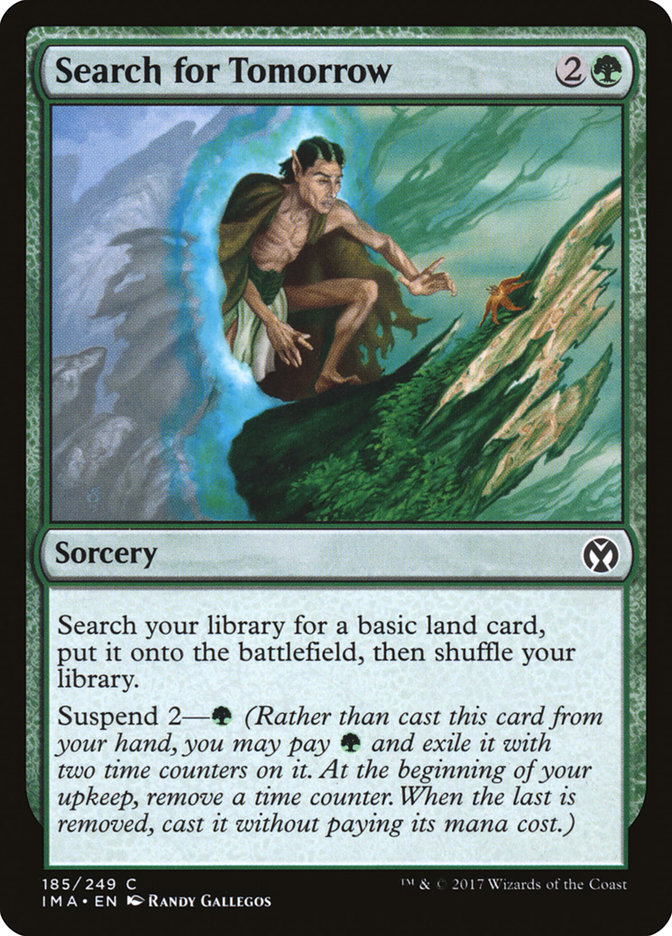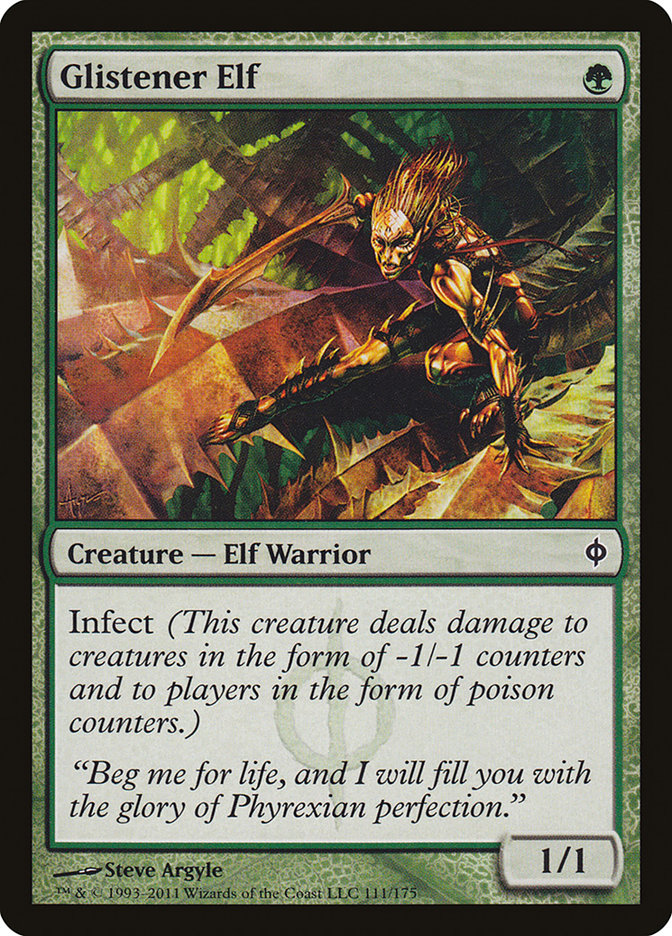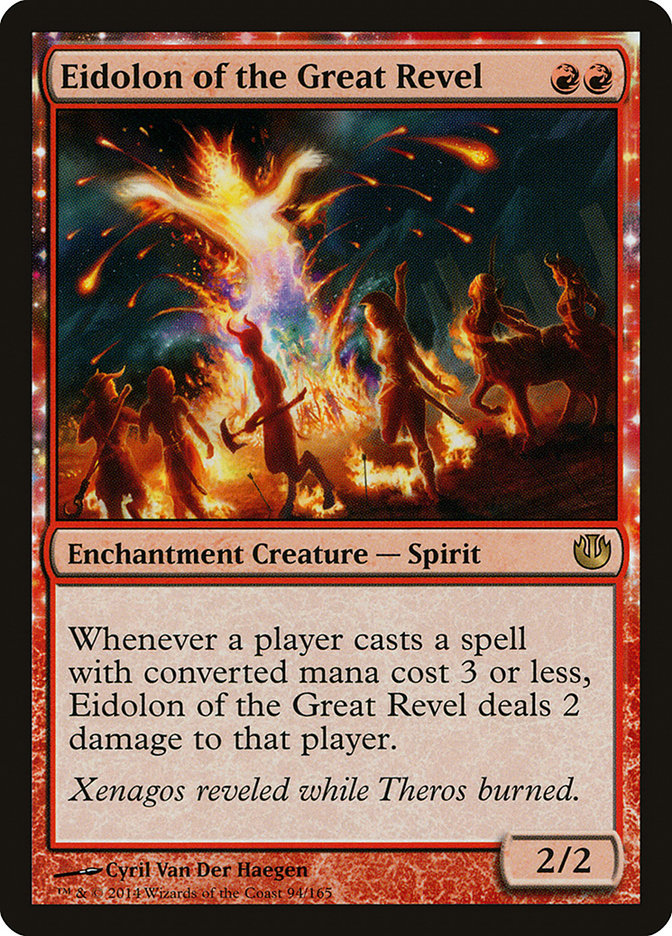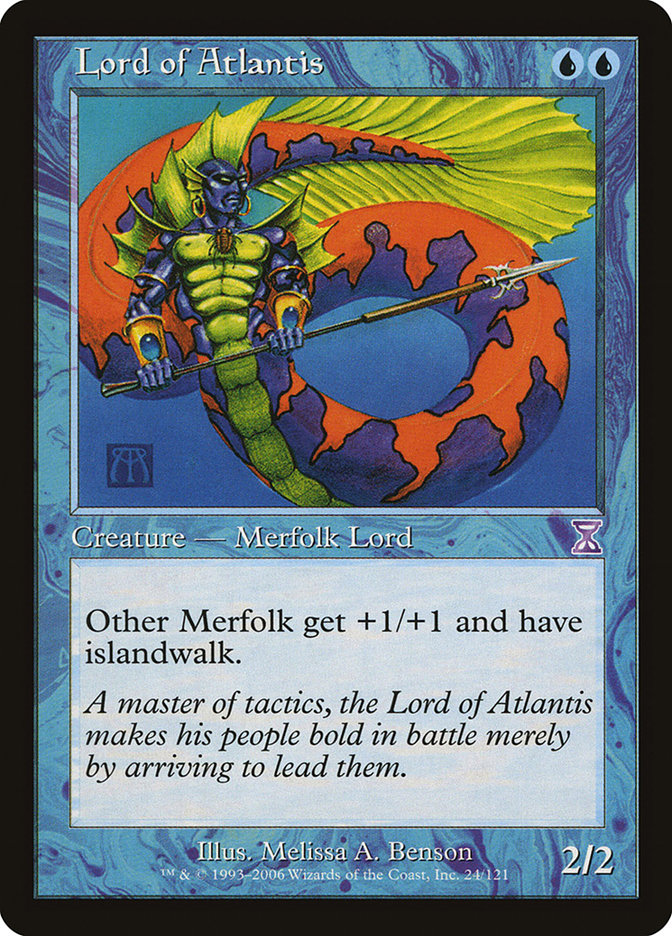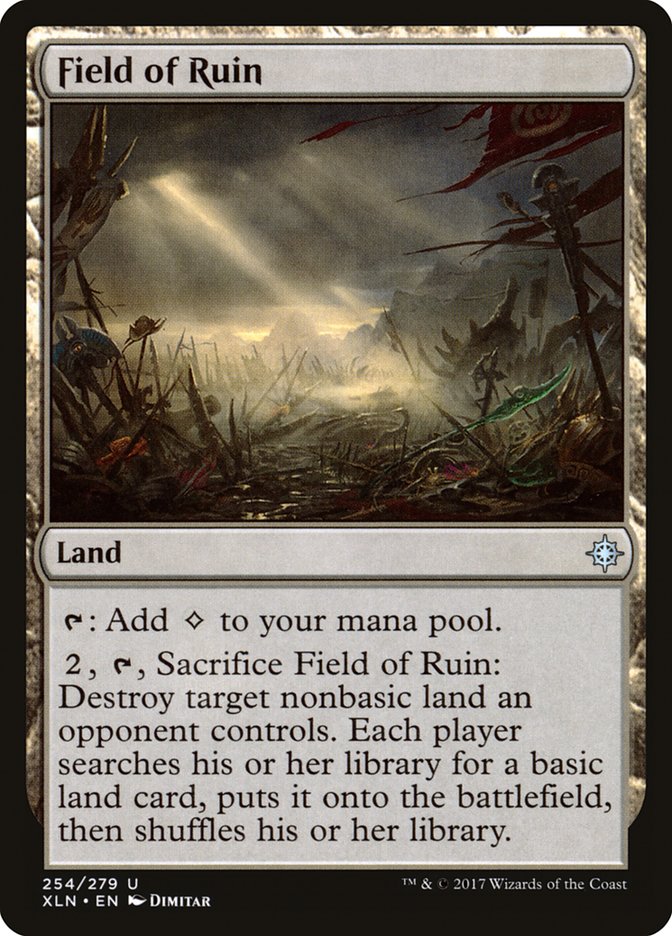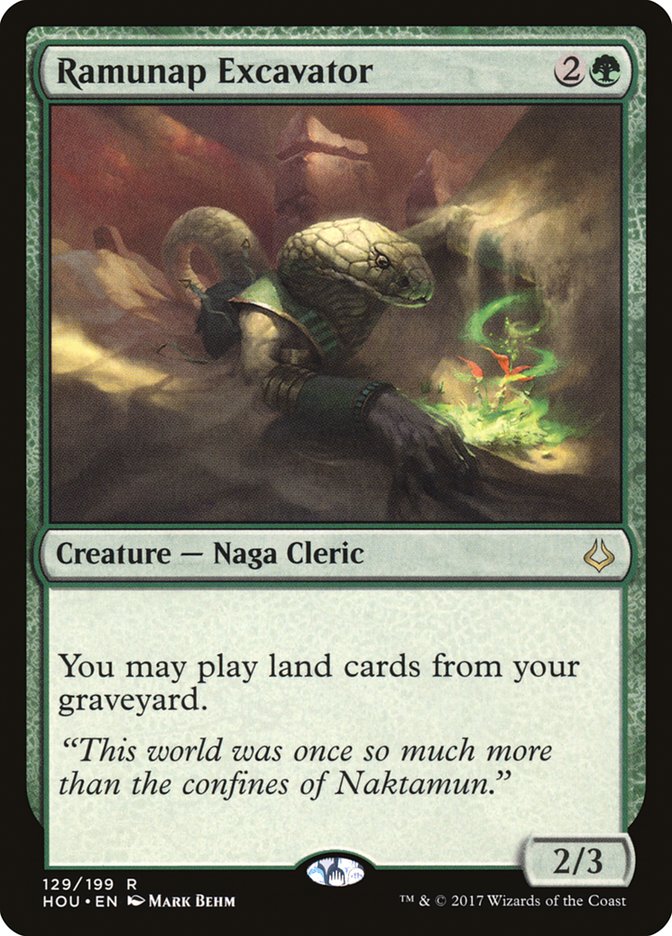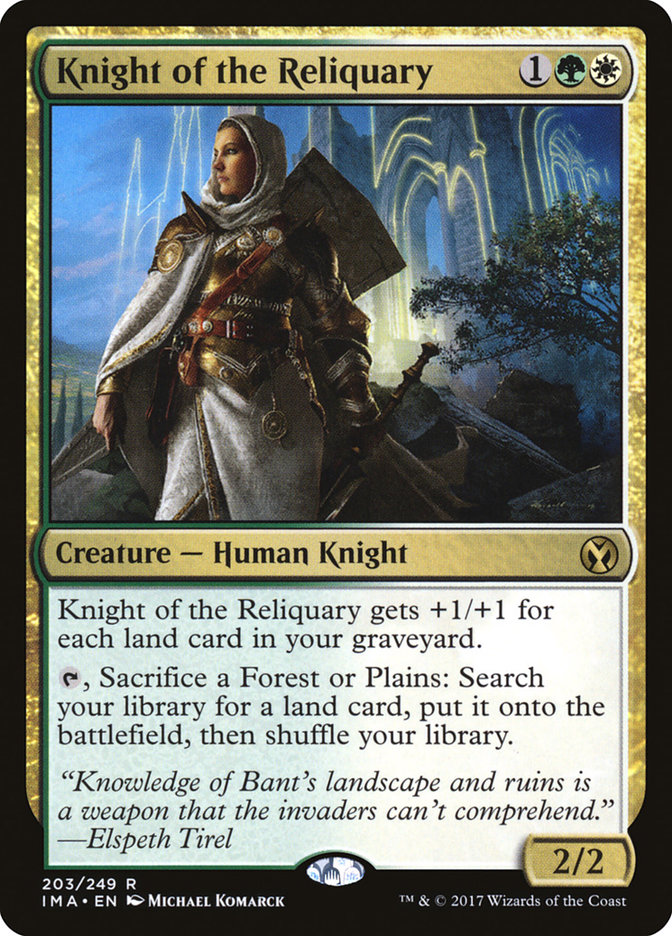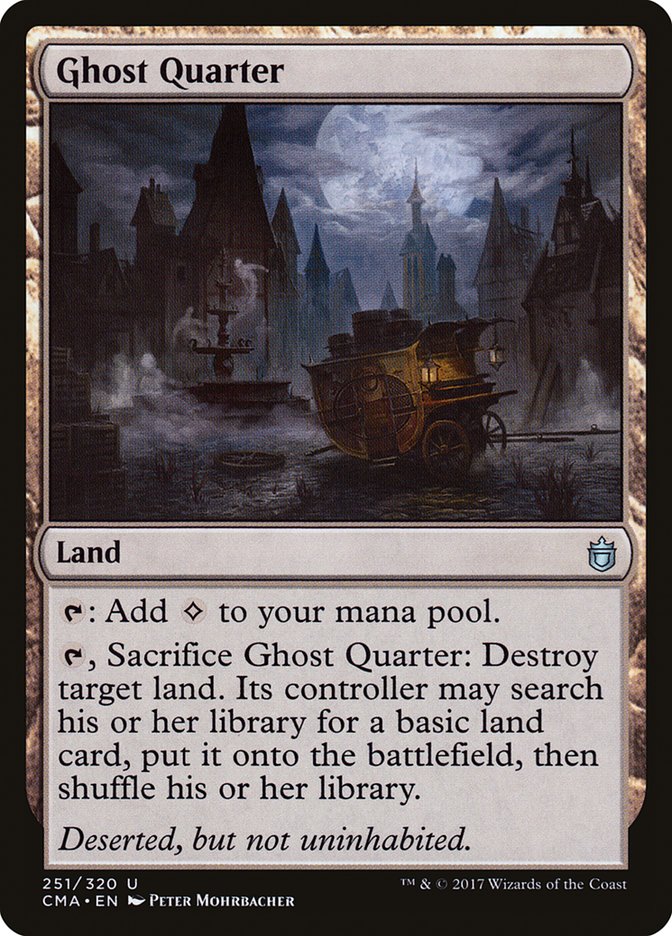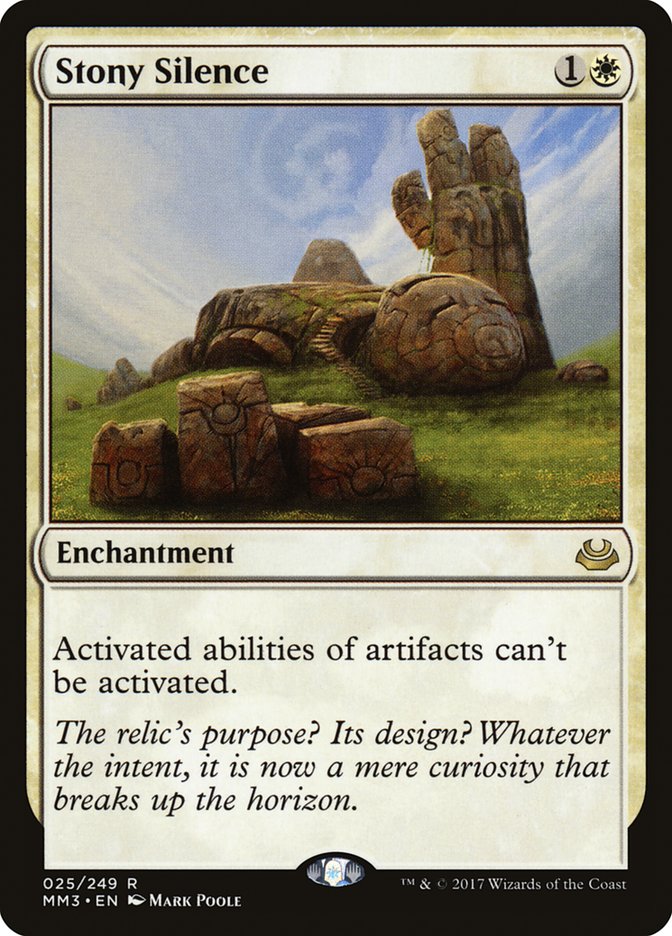Considering how diverse Modern as a format is, the Top 8 of Grand Prix Oklahoma City is remarkably narrow. Three Green Tron decks and two TitanShift decks make up five “big mana” decks, and the remaining three decks are two graveyard decks, Dredge and Living End, and a control deck in the style of Splinter Twin with Through the Breach / Emrakul, the Aeons Torn instead of the Splinter Twin combo and white mana for sideboard cards and a couple of copies of Lightning Helix. Moreover, the finals was a TitanShift mirror match.
Creatures (8)
Lands (27)
Spells (25)

As a player who generally tries to play Thoughtseize in Modern, this tournament was a powerful case against that. Not only were there no Thoughtseizes in the Top 8, but Thoughtseize isn’t even good against any of these decks. They’re all extremely redundant and topdeck well. Thoughtseize is good against Through the Breach specifically, but it’s not necessarily great against control, and it’s actively bad against these other decks.
For a time, Modern looked to be becoming a midrange format, as Death’s Shadow and Collected Company decks rose to the top. More recently, we’ve seen success from Humans and U/R Gifts Storm, but this Top 8 represents an entirely different format.
None of these decks are about creature combat. Sure, some of them technically attack with creatures to end the game, but there isn’t a single “creature deck” here.
No Thoughtseize, no creature decks, one deck with counterspells and removal. The other decks barely played removal. This tournament wasn’t about interactive Magic. It was about proactive Magic. It was about going over the top of people.
To me, even though I like to play Thoughtseize, this represents a return to normalcy in Modern. It was strange when Grixis Death’s Shadow, a deck that plays like a fair Legacy deck, was the deck to beat. This is just good, old-fashioned Modern; the format’s too diverse to react to everyone, so you just need to bring your best Plan A and get ready to race.
The finals was a TitanShift mirror. Is it the best deck in Modern? Does that make it the deck to beat? I don’t think so, but it’s not a deck I know well, so maybe it’s better than I think.
So what’s the next step? Where do we go from here? How can you get an edge in your next Modern tournament?
Well, remember that Modern moves slowly. It’s hard for me to believe that any deck that was good this week will really be bad next week. The format is just too big for a single finish to make too many waves. That said, if you follow that logic, the best choice may not be to do what was good last week. The best choice may be to understand that the forces that made those decks good last week will still make them good next week, and the way to prepare to win a tournament is to find something that has an edge against those decks, assuming they’ll rise to the top again.
Essentially, I want to look at Grand Prix Oklahoma City as setting the rules of engagement for the next tournament. This tells everyone that Modern isn’t a fair format. Modern isn’t an interactive format. Modern is about doing your own thing. Big mana decks tend to do their own thing in a way that’s great at beating fair decks, because fair decks are good at prolonging the game, but the big mana decks’ spells are just more powerful on average, so the longer game favors them. If you want to beat big mana decks, you need to focus on your short game and win before they can do their big thing.
There are a lot of different kinds of non interactive Modern decks. If decks like Burn, Storm, or Ad Nauseam were winning, the correct solution would be to interact with them. Play disruptive elements that stop them from executing their game plan, and then you can beat them with normal cards. Big mana decks are an entirely different thing. For these non-interactive decks, you just want to go faster. They’re built to be consistent and resilient. It makes sense that they’d come out on top of a field that was getting too midrange. They’re neither fast nor disruptive, and that means they’re easy to race.
My advice to level the top finishers at Grand Prix Oklahoma City?
Fast combo. Storm, Infect, Ad Nauseam. Maybe even Burn or Affinity. However you like to goldfish in Modern, just try to get them dead.
Is that the right level to be on? Well, what are you afraid of? The decks that are best against those decks are the midrange decks that lose to the big mana decks. Are you really afraid of people looking at this Top 8 and showing up with a deck that’s horrible against at least five-eighths of it? Don’t get me wrong, it’s Modern, and a large portion of people will just play what they have and know, so it’s not crazy to be afraid of whatever you want to be afraid of, but as far as trend lines go, you have to imagine that there will be a below-average number of decks that are bad against big mana decks at the next tournament.
So, that’s my reasoning and my recommendation, but what, precisely would I do?
The answer may not surprise you.
I’d play Lantern.
Why? Well, it’s probably the deck I know best, and if it’s not the most powerful deck in Modern, it’s near the top. More importantly, I think it’ll be well-positioned.
Lands (18)
Spells (42)

Think about it.
Lantern’s worst matchups are Tron and Jund. This Top 8 was a breakout for big mana decks, but it demonstrated fairly convincingly that TitanShift beats Tron. If these are the two decks everyone has in mind, and they occupy a roughly similar space in the metagame, why would you choose the one that loses to the other?
Even if players do show up with Tron, I expect savvy players to bring decks that beat Tron. As a Lantern player, I wouldn’t expect to play against Tron at the top tables next week. Yes, I said that everything will basically stay the same, that Modern doesn’t shift that much, and that next week should look like this week. Yes, there was more Tron than I expected this week. But I do think that, as ebbs and flows go, next week won’t be a great week for Tron.
(Disclaimer: This might be wishful thinking. Not only did Green Tron occupy three of the Top 8 slots, it also finished 9th and 12th. Five of the Top 12 is an absurdly dominant performance for Modern, and it’s possible that Tron just has more going for it than I’m giving it credit for. Maybe it’s simply the most powerful deck; maybe it preys on too large a portion of the field. I personally would still bet against that, but a reasonable person could certainly conclude that Tron is the deck to beat, and that folding to it, which Lantern does, is unacceptable.)
As for Jund, I discussed this above. What possible draw is there to playing Jund right now? Do you know how deep you have to go to think you’ll be leveling people with that choice? I believe the answer is “precisely too deep.”
But didn’t I just try to claim that Lantern was the right strategy to win this week, and didn’t I enter the tournament? You’ll notice that not only does my name not appear in the Top 8, but no one else playing Lantern did either. Look, it’s hard to win a 1400-person tournament. I finished 20th. I made a couple of mistakes in two of the three matches I lost. I still think it was a great choice for that tournament, and I think it’s an even better choice for the next one.
It’s not just that I don’t expect a lot of Tron or Jund, it’s that I believe Lantern is good against the rest of the Top 8 and most or all of the fast, non-interactive decks that prey on big mana decks. Lantern is best against people who just want to do their own thing as fast as possible. Strategies like that can be easily picked apart and have very few ways to break free of a lock because they don’t have room for narrow interaction like artifact removal.
So, breaking news: play the deck I think is good, but trust me, it’s a metagame choice. I’m just trying to tell it like it is. If you don’t want to play Lantern, that’s fine, I started with what you should do in that case: whatever proactive thing you’re into. Maybe play Merfolk and put a bunch of Disdainful Strokes in your sideboard.
I mean, why not?
So those are my conclusions from looking at the Top 8, but what else can we learn from Grand Prix Oklahoma City?
The highest-finishing Death’s Shadow deck was 27th. While that looks bad for Grixis Death’s Shadow, ten of the Top 32 decks contained Snapcaster Mage, so what we’re really seeing is a format where black isn’t the best color to pair with Snapcaster Mage, which makes sense if you’ll recall my statement at the beginning that this isn’t a Top 8 I want to be casting Thoughtseize against.
If you’re a Grixis Death’s Shadow player or anyone who likes casting Snapcaster Mage, I think I’d be looking to show up with a deck with four Spreading Seas and four Field of Ruin, probably with two Disdainful Strokes in the sideboard. If I were looking to play fair Magic, as I know a lot of players are, that’s where I’d start. The effortless mana disruption gives the deck game against Tron, a rarity for control decks, and the cheap removal and card advantage from these decks likely positions them well against the decks that I’d advise picking up for next week.
From my own experience at the Grand Prix, the deck that impressed me most was Ramunap Excavator Collected Company. The deck uses Ramunap Excavator, Courser of Kruphix, Tireless Tracker, Knight of the Reliquary, and Azusa, Lost but Seeking to build an engine that attacks its opponent with a barrage of Ghost Quarters or simply draws tons of cards with Clues and Horizon Canopy.
As a Lantern player, that was too many creatures that didn’t need to attack or use activated abilities to threaten me. My Pithing Needles were both overtaxed and insufficiently effective, and my few Abrupt Decays were massively overworked between the creatures like Tireless Tracker and Ramunap Excavator that were very hard to leave on the battlefield and Stony Silence. I’m not sure that these creatures are the best one can find with Collected Company against other decks, but it is a good collection of independently powerful creatures that combine to equal far more than the some of their parts, and a barrage of Ghost Quarters is certainly effective against a reasonably wide range of decks, and the inherent card advantage in the deck makes it strong against any fair opponent.
Despite Courser of Kruphix’s best efforts, I doubt I’d want to play the deck against Burn, and I imagine other fast combo decks could be an issue, but Unified Will offers some resistance. Still, thinking it through like this, while the deck looked to do some really powerful things, I think it’s probably not a good choice at this exact moment. It feels like it would ultimately have similar matchups to Tron, but with a little less pedigree at this point, and if people are already going to be gunning for Tron, I don’t think this is where I’d want to be.
There is an alternate line of thinking that supports this deck, however; if you believe that people are even less reactive than I’m modeling here, and you think that the fact that this weekend was good for Tron means that that’s just a good metagame position to occupy, and you believe that a barrage of Ghost Quarters backed by Stony Silence and some counterspells is where you want to be against Tron, I could understand seeing this deck as a way to occupy the correct metagame space while beating other decks that try to do the same thing (where “doing the same thing” refers to “beating up on the same people,” not doing it in the same way).
One meta-level conclusion here is that, for every conclusion I come to, I can imagine a slightly different way of thinking that contradicts it or supports the opposite. What should you do with that? Same as always: play what you know, especially if it’s a deck that does its own thing well. Ultimately, this is what makes Modern great, and, finishing a weekend of playing it, I absolutely believe that it’s great. I had a blast, and watching other people play, they played games that looked nothing like mine, and that’s pretty awesome.






